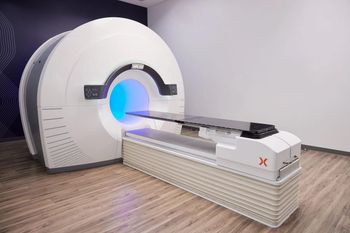
Lowering Dose While Increasing Performance
Can new technology in radiology maximize efficiency without sacrificing quality?
Today, there is serious intent to lower dose in medical imaging studies. At RSNA 2014, there were many examples of meaningful results. Similarly, at CARS 2015, surgeons indicated an increasing focus on lowering dose.
The questions that follow from this are, “Can performance be improved by other means than increasing dose?” And, “Can performance be improved despite the fact that dose is being reduced?”
There is some indication that this may indeed be possible – the key being a new paradigm for visualization. Today, docs are mainly viewing images using 2D views of 3D volume data sets (referred to as 2.5D). This requires the docs to use their cognitive ability to create 3D views in their brain. This process often results in cognitive strain and loss of time. How might a new paradigm impact this situation?
Knowledge, a combination of cognition and intuition, is the driver behind increasing visualization performance. Hegarty1 points out that, “complementary actions have the potential to relieve the user of the need to perform an internal computation.”
Let’s begin our search for complementary actions by recalling the movie Avatar. Armed with stereo glasses, we can view the imagery with depth perception. Suppose we now add virtual reality to the equation – the ability to look around and interact with objects. We now have interactive virtual reality (IVR), a way of providing for complementary actions.
What is the doctor’s initial reaction to using such a system?[[{"type":"media","view_mode":"media_crop","fid":"41934","attributes":{"alt":"Ronald Schilling, PhD","class":"media-image media-image-right","id":"media_crop_3422326607196","media_crop_h":"0","media_crop_image_style":"-1","media_crop_instance":"4493","media_crop_rotate":"0","media_crop_scale_h":"0","media_crop_scale_w":"0","media_crop_w":"0","media_crop_x":"0","media_crop_y":"0","style":"height: 128px; width: 160px; margin: 1px; border-width: 0px; border-style: solid; float: right;","title":"Ronald Schilling, PhD","typeof":"foaf:Image"}}]]
A radiology student at UCSF, upon seeing IVR, stated, “I’ve just spent two years learning how to construct 3D from 2D views. With IVR, the 3D is present from the start and I can spend all of the required time to focus on solving the clinical problem.”
Another opportunity from IVR is to bridge the radiology-surgery gap. When seeing IVR at RSNA, a radiologist from UCLA noted, “now I can speak intelligently to the surgeon.” A surgeon from El Camino Hospital in Los Altos, CA, noted, “I’ve never opened up a patient and seen a 2D view.”
In future blogs, specific examples will be presented that provide evidence of the points made above. The results are based upon a “clinical/technical tie” process of understanding the clinical “needs” and providing complementary actions to optimize both clinical efficacy and workflow.
References:
1. Hegarty M. “The Cognitive Science of Visual – Spatial Displays, Topics in Cognitive Science,” 2011 – Wiley Online Library.
Newsletter
Stay at the forefront of radiology with the Diagnostic Imaging newsletter, delivering the latest news, clinical insights, and imaging advancements for today’s radiologists.




























